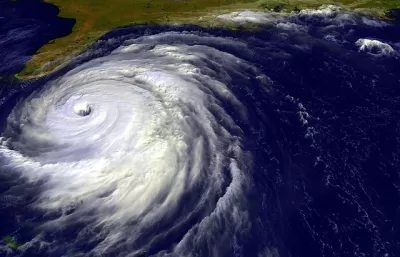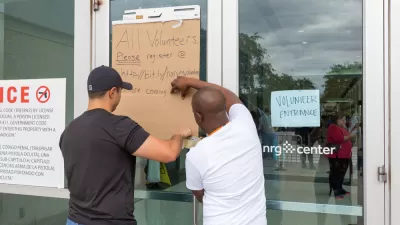Code requirements for wind resistance vary substantially across Florida, with less stringent building requirements in areas of the Panhandle hit hard by Hurricane Michael.

In Hurricane Michael's aftermath, it's devastatingly clear that structures in the storm's path were unable to weather a Category 4 storm. Florida code requirements are the most stringent in South Florida, Andres Viglucci, David Ovalle, Caitlin Ostroff, and Nicholas Nehamas report. However, "they taper down the farther north you move along the peninsula. In most of the Panhandle, the code requirements are significantly less stringent."
For instance, structures in Miami-Date County must be able to withstand winds of 175 miles an hour, while "along the stretch of the Panhandle hit hardest by Michael — including Mexico Beach, Apalachicola and Panama City — the design standard drops to as low as 120 miles an hour before rising gradually to 150 mph around Pensacola at the state's far western edge."
FULL STORY: Florida’s building code is tough, but Michael was tougher. Is it time for a rewrite?

Alabama: Trump Terminates Settlements for Black Communities Harmed By Raw Sewage
Trump deemed the landmark civil rights agreement “illegal DEI and environmental justice policy.”

Study: Maui’s Plan to Convert Vacation Rentals to Long-Term Housing Could Cause Nearly $1 Billion Economic Loss
The plan would reduce visitor accommodation by 25% resulting in 1,900 jobs lost.

Planetizen Federal Action Tracker
A weekly monitor of how Trump’s orders and actions are impacting planners and planning in America.

Federal Homelessness Agency Places Entire Staff on Leave
The U.S. Interagency Council on Homelessness is the only federal agency dedicated to preventing and ending homelessness.

Restoring Northern India’s Himalayan ‘Water Temples’
Thousands of centuries-old buildings protect the region’s natural springs and serve as community wells and gathering places.

Milwaukee to Double Bike Share Stations
Bublr Bikes, one of the nation’s most successful, will add 500 new e-bikes to its system.
Urban Design for Planners 1: Software Tools
This six-course series explores essential urban design concepts using open source software and equips planners with the tools they need to participate fully in the urban design process.
Planning for Universal Design
Learn the tools for implementing Universal Design in planning regulations.
Caltrans
Smith Gee Studio
Institute for Housing and Urban Development Studies (IHS)
City of Grandview
Harvard GSD Executive Education
Toledo-Lucas County Plan Commissions
Salt Lake City
NYU Wagner Graduate School of Public Service





























